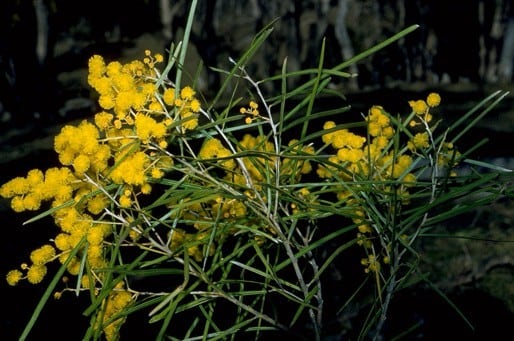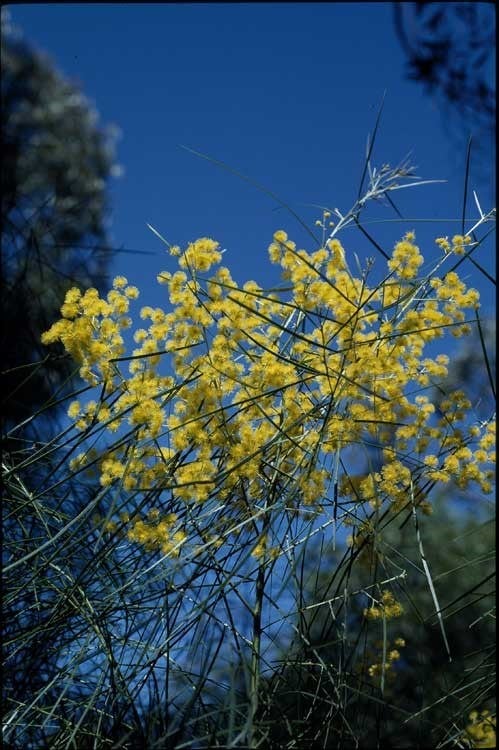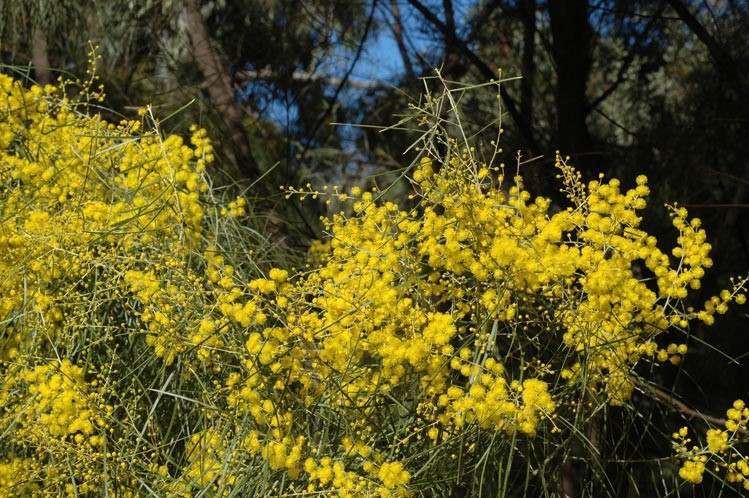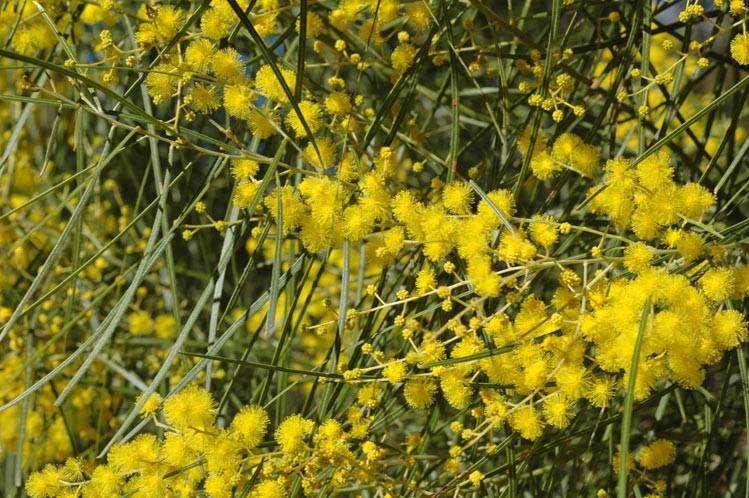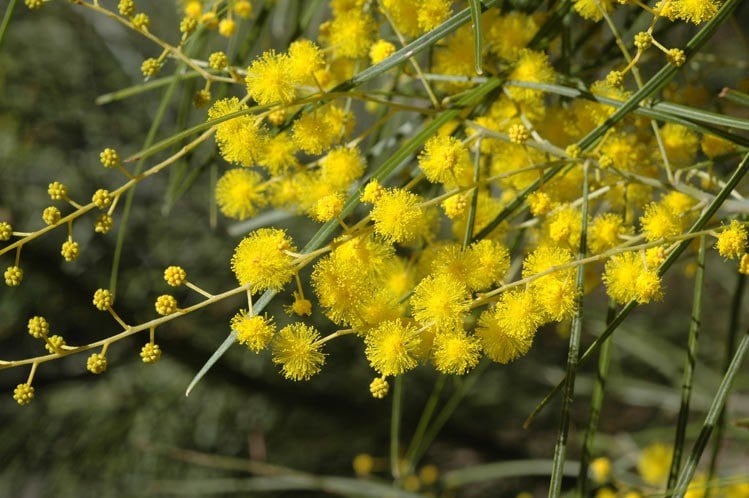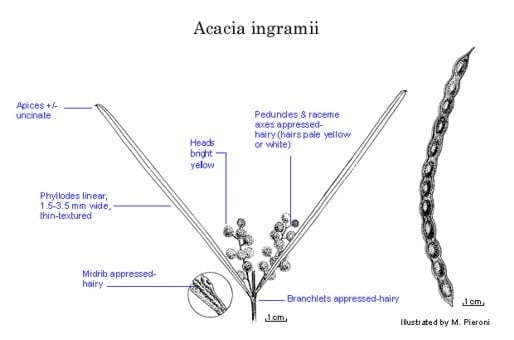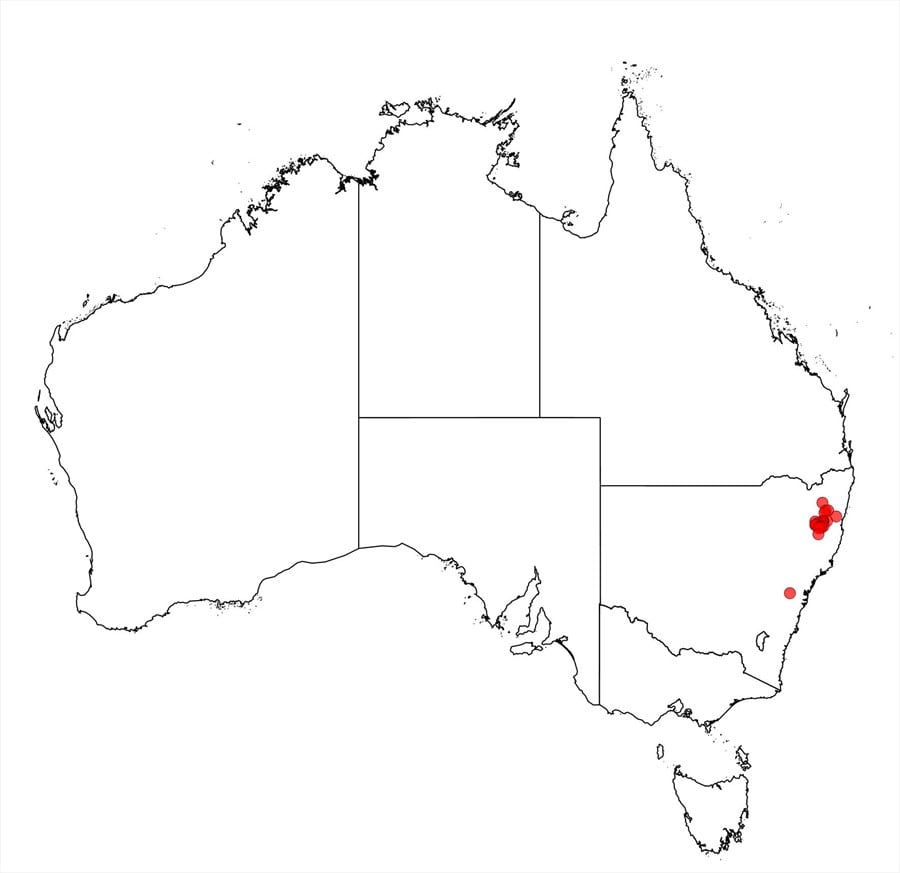Acacia ingramii Tindale
WATTLE
Acacias of Australia
Family
Fabaceae
Distribution
Occurs in the upper catchment of the Macleay R. (E to SE of Armidale), N.S.W.
Description
Spreading bushy shrub or tree 2–5 m high, rarely to 7.5 m high. New shoots densely citron-sericeous. Branchlets dark coloured, appressed-puberulous with white hairs. Phyllodes narrowly linear, 6–14 cm long, 1.5–3.5 mm wide, uncinate to subuncinate, thin; midrib appressed-puberulous (hairs pale yellow or white) otherwise glabrous or subglabrous; lateral nerves obscure; glands rather prominent, 1 or 2, with lowermost 1–5 (–10) mm above pulvinus. Inflorescences racemose; raceme axes 1.5–5 cm long, slender, appressed-puberulous with golden or white hairs; peduncles (1.5–) 2.5–5 mm long, with indumentum as on raceme axes; heads globular, 14–22-flowered, bright yellow. Flowers mostly 5-merous; sepals c. 3/4-united. Pods convex over and slightly to moderately constricted between seeds, to 11 cm long, 5–8 mm wide, firmly chartaceous, glabrous. Seeds (few seen) longitudinal, oblong, 4.5–5 mm long, arillate.
Habitat
Grows in rugged gorge country on soils derived from slates in tall scrub or sometimes eucalypt woodland.
Specimens
N.S.W.: Blue Hole, Gara R., 12 Dec. 1962, R.Southwell (NSW).
Notes
Closely related to A. neriifolia which is distinguished especially by its broader phyllodes which commonly have a denser indumentum more generally distributed over the lamina surface. See M.D.Tindale, Telopea 1: 373 (1978), for further discussion.
FOA Reference
Data derived from Flora of Australia Volumes 11A (2001), 11B (2001) and 12 (1998), products of ABRS, ©Commonwealth of Australia
Author
B.R.Maslin
Minor edits by B.R.Maslin
This identification key and fact sheets are available as a mobile application:
URL: https://apps.lucidcentral.org/wattle/
© Copyright 2018. All rights reserved.

